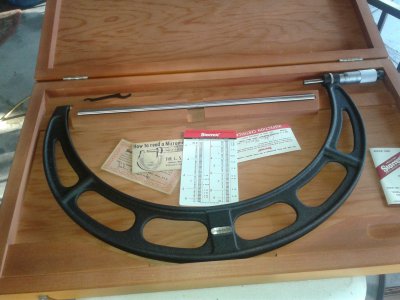- Joined
- Feb 27, 2023
- Messages
- 109
So I was given to micrometers by a buddy of mine one is in the box complete which is a Starrett no.436 1in and it appears to be working perfect, then I was given a Craftsman micrometer which I am unsure if it is working correctly, my buddy said that he is never tried it and it came out of his granddad's Kennedy chest



